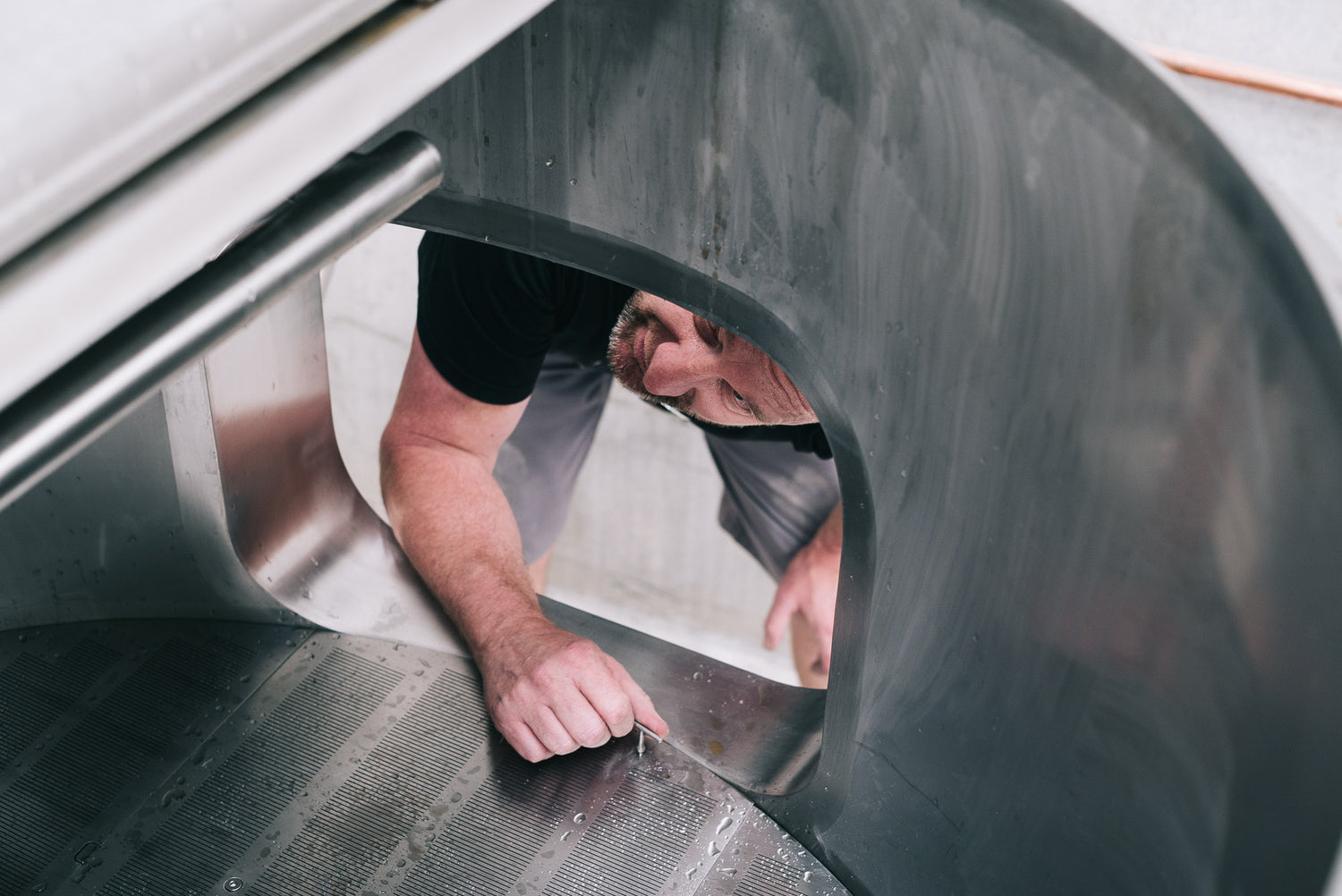We ask Grant Audrins – who recently shook off the ‘trainee’ title to become an official TWØBAYS gluten free beer Brewer – to give us his top tips on how to store craft beer. Here’s what he says:
What temperature should I keep my beer at?
Storing beer above 5°C for a length of time will impact flavour. This won’t surprise many, but the key to storing beer is to always keep it cold. A kitchen fridge or beer fridge around 5°C is optimal. Slightly warmer is okay, but reactions occur quicker above 5°C, resulting in the breakdown of flavour compounds and hops losing aromatic flavours. At TWØBAYS, we store our beer cold at the brewery and use cold chain transport to bottle shops until the 'final mile' where we can dictate what happens when it hits bottle shop floors (we try for fridges!).
What’s best before date for beer?
Beer labels and cans should always carry a pack date and a best before date (sometimes on the bottom of the can) – usually a year apart. Storing beer above 5°C will impact the life expectancy of the beer as it is not stored as the brew team intended when they brewed it. Generally, the fresher the beer, the better – but there are exceptions to this. (Read more below.)

What happens if I don’t keep my beer cold?
Oxidisation of beer can cause it to taste a little ‘off’ – sometimes with cardboard, sherry or vinegar flavours coming through. Sometimes these flavours can enhance certain beer styles (see point below), but often they detract from the brewer’s intended balance and profile. Oxidisation is when too much oxygen enters the can; from the moment the beer enters the fermenter to maturation, pressuring, chilling and packing, we ensure an environment with minimal oxygen – and we stringently monitor the dissolved oxygen levels. Oxidisation is minimised in cold conditions – optimally 5°C.
What happens if I keep my beer too cold?
We’ve all thrown beers in the freezer to try and chill them down quickly, but for those who forget, there's a lot worse than frozen, slushie beer or smashed glass. It’s important not to allow the beer to get too close to 0°C as CO2 will dissolve in the beer and it won’t be the same when it warms up again.
Are all beers best served cold?
Not all beers styles are best served as close to 5°C as possible. While most should always be stored cold, you can pull a beer out of the fridge early. Some stouts and porters, for example, benefit from warming up in room temperature over a 20-30 minute period before drinking (the beer might be served at 10°C). The slightly warmer conditions can accentuate malty coffee and chocolate flavours – to the consumer’s preference.

Are all beers best enjoyed as fresh as possible?
Not all beers.
- Hoppy ales – such as our Pale Ale, XPA and IPA – are best enjoyed as young as possible; or at least within three or four months of pack date for best drinking conditions. There is a slow degradation after that period, impacting malt balance and hop aromas – although higher alcohol content does assist in the longevity of the beer.
- Stouts and porters age better, including No Doubt Stout. Being malt-forward beers, the oxidation process can result in stronger toffee, coffee, sherry and burnt sugar characters.
- Pulp Fusion – and other sour beers – have a low pH environment (approx. pH3), making it difficult for biological reactions to occur in the can. Still best within six months – perfect for during the warmer months.
- Lastly, our core Lager is brewed to a style that is balanced between malt, bitterness and hopiness. In my opinion, it is the hardest style to master as it’s a naked beer – meaning there is nowhere to hide any imperfections. Off flavours can be masked in hoppier beers, but not this beer – it’s one to drink as young as possible – just as the brewer intends it to taste.
Do you have to store beers upright?
No. Wine, beer and any other liquor served in bottles could be impacted by corks, cages or bottle tops when on their side (if the liquid is in contact with the sealing agent), but it doesn’t matter with beer in a can. Just let the can settle upright before serving if it has been upside down!
Is it okay to store beer in a clear-window fridge?
Again – it’s fine to store cans in clear-windowed fridges, but not some bottles – especially lighter coloured bottles; depending on where the fridge is, of course. Direct light – in an indoor or outdoor bottle fridge – can cause higher levels of bitterness than intended (and even a ‘skunky’ character due to the reaction of iso-alpha acids exposed to high UV levels. Dark glass bottles (brown) are better than light glass bottles (green and clear), but some macro breweries treat their beer with enzymes to eliminate the reactions.
Are cans or bottles best for beer?
Cans are always better in my opinion. Aluminium is the perfect vessel! It’s light, doesn’t allow UV; no foreign object (cage, cork or bottle top) to interfere with the beer and a smaller chance of any oxidation thanks to a better air-tight seal. The can is also easier and quicker to recycle! Read more on environmental responsibility at TWØBAYS here!






